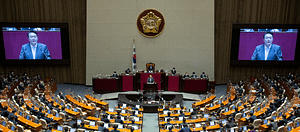The Tulsa Race Massacre is a story not many people know about. In one of the darkest moments in American history, Tulsa’s predominantly African-American community (the city was dubbed “Black Wall Street”) came burning down at the hands of white supremacists. This horrific event showed just how racist the United States was, and still unfortunately is.
Tulsa, a major city located in Oklahoma, was a thriving place for businesses and living. The population diversity was high, yet racism was a system deeply imbued in the U.S. Jim Crow Laws and black codes were strictly enforced, giving supreme privilege to the white people in Oklahoma and throughout the nation. Groups such as the Ku Klux Klan (or the KKK) did everything in their power to intimidate black people by using violent tactics. It was only a matter of time before the first stone was thrown.
When a court case between the two races became controversial, white mobs began storming black areas with unparalleled force. While African-American neighborhoods tried to fight back against their aggressors, the people were simply outmatched in numbers. They looted homes, burned down shops, and detained hundreds of men, women, as well as children. Over 1,000 buildings were destroyed altogether, in an act of tragedy.
More tragic were the number of African-American families that were displaced and homeless after the dust cleared. Government efforts were weak and disjointed. The Red Cross truly worked exceptionally hard to rejuvenate the city.
Mistakes are made by the best of us, but the point of them is to learn and grow better. Acting like the Tulsa Race Massacre never happened is not addressing racism at its peak. Especially at times where America is holding onto its diversity by a fringe, educating those around us about these events will inspire the future generation to never make the same mistakes again.
Sources:
Image Credits: Greenwood Cultural Center, AP










